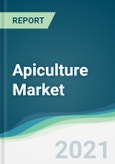The global apiculture market is poised for significant growth, driven by increasing consumer awareness of honey’s health benefits and robust government support for beekeeping initiatives. Apiculture, the scientific and commercial management of bees for producing honey, beeswax, propolis, and other products, is gaining traction as demand for natural, health-promoting products rises. The market is segmented by product type (honey, beeswax, propolis, live bees, others), application (food & beverages, medical, cosmetics, others), method (traditional and modern beekeeping), and geography. Despite initial setbacks from the COVID-19 pandemic, the market has regained momentum and is expected to expand steadily through 2030, fueled by health-conscious trends and supportive policies.
Market Drivers
Growing Awareness of Honey’s Health Benefits
The rising recognition of honey’s health benefits is a primary driver of the apiculture market. Honey, rich in antioxidants, supports cardiovascular health by lowering blood pressure and reducing LDL cholesterol while increasing HDL cholesterol, according to the National Institutes of Health. Its antibacterial properties and topical application for wound healing further enhance its appeal. The Food and Agriculture Organization of the United Nations highlights honey’s role as a quick energy source and its benefits in weight loss, skin health, and detoxification, particularly through popular remedies like lemon honey water in urban areas. This awareness, amplified by marketing efforts from honey producers, is driving increased consumption, boosting demand for apiculture products and supporting market growth.Government Incentives and Support
Government-backed initiatives and financial incentives are significantly propelling the apiculture market. In the United States, programs like Virginia’s Beehive Distribution Program provide free equipment to boost hive numbers, while the Farmers Market Promotion Program offers grants ranging from $5,000 to $10,000 for starting apiaries. The U.S. Department of Agriculture supports small businesses with grants up to $500,000, ideal for apiculture ventures. In India, the National Beekeeping and Honey Mission (NBHM), managed by the National Bee Board, provides free training and financial support to double farmers’ incomes, fostering market expansion. These global efforts to promote beekeeping through subsidies and training are expected to drive significant growth through 2030.Geographical Outlook
The Asia-Pacific region is anticipated to hold a prominent market share, driven by growing awareness of honey’s benefits and increasing demand in countries like China and India. China, the world’s leading honey producer, significantly contributes to the region’s dominance. Rising consumer preference for natural sweeteners and health-focused products further fuels market growth in this region, supported by cost-effective production and government encouragement of apiculture.Competitive Landscape
Key players, including The Best Bees Company, Mann Lake, Ltd. (Kelley Beekeeping), and Dadant & Sons, Inc., are adopting strategies like product diversification and strategic partnerships to maintain competitive edges. These companies focus on expanding product portfolios and leveraging regional incentives to enhance market presence.Market Outlook
The apiculture market is set for robust growth through 2030, driven by health-driven consumer trends and supportive government policies. The Asia-Pacific region’s production strength and global demand for honey position the market for sustained expansion. Stakeholders should prioritize innovation in beekeeping methods and marketing to capitalize on health-conscious consumer preferences and emerging opportunities.Key Benefits of this Report:
- Insightful Analysis: Gain detailed market insights covering major as well as emerging geographical regions, focusing on customer segments, government policies and socio-economic factors, consumer preferences, industry verticals, and other sub-segments.
- Competitive Landscape: Understand the strategic maneuvers employed by key players globally to understand possible market penetration with the correct strategy.
- Market Drivers & Future Trends: Explore the dynamic factors and pivotal market trends and how they will shape future market developments.
- Actionable Recommendations: Utilize the insights to exercise strategic decisions to uncover new business streams and revenues in a dynamic environment.
- Caters to a Wide Audience: Beneficial and cost-effective for startups, research institutions, consultants, SMEs, and large enterprises.
What do businesses use our reports for?
Industry and Market Insights, Opportunity Assessment, Product Demand Forecasting, Market Entry Strategy, Geographical Expansion, Capital Investment Decisions, Regulatory Framework & Implications, New Product Development, and Competitive Intelligence.Report Coverage:
- Historical data from 2022 to 2024 & forecast data from 2025 to 2030
- Growth Opportunities, Challenges, Supply Chain Outlook, Regulatory Framework, and Trend Analysis
- Competitive Positioning, Strategies, and Market Share Analysis
- Revenue Growth and Forecast Assessment of segments and regions including countries
- Company Profiling (Strategies, Products, Financial Information, and Key Developments among others)
Market Segmentation:
- By Bee Type
- Apis Dorsata
- Apis Cerana Indica
- Apis Florea
- Apis Mellifera
- By Product Type
- Honey
- Bee Wax
- Propolis
- Others
- By Method
- Traditional Beekeeping
- Modern Beekeeping
- By Application
- Food & Beverage
- Pharmaceuticals
- Personal Care & Cosmetics
- Others
- By Geography
- North America
- USA
- Canada
- Mexico
- South America
- Brazil
- Argentina
- Others
- Europe
- Germany
- France
- United Kingdom
- Italy
- Others
- Middle East and Africa
- Saudi Arabia
- UAE
- Others
- Asia-Pacific
- China
- India
- Japan
- South Korea
- Indonesia
- Thailand
- Others
- North America
Table of Contents
Companies Mentioned
- The Best Bees Company
- Mann Lake, Ltd.
- Alveole
- Miller Honey Farms
- Capilano Honey Ltd
- Barkman Honey LLC
- Beehive Botanicals Inc.
- Koster Keunen LLC
- Savannah Bee Company
- Pastili Limited
Table Information
| Report Attribute | Details |
|---|---|
| No. of Pages | 149 |
| Published | November 2025 |
| Forecast Period | 2025 - 2030 |
| Estimated Market Value ( USD | $ 9.81 Billion |
| Forecasted Market Value ( USD | $ 12.02 Billion |
| Compound Annual Growth Rate | 4.1% |
| Regions Covered | Global |
| No. of Companies Mentioned | 10 |









